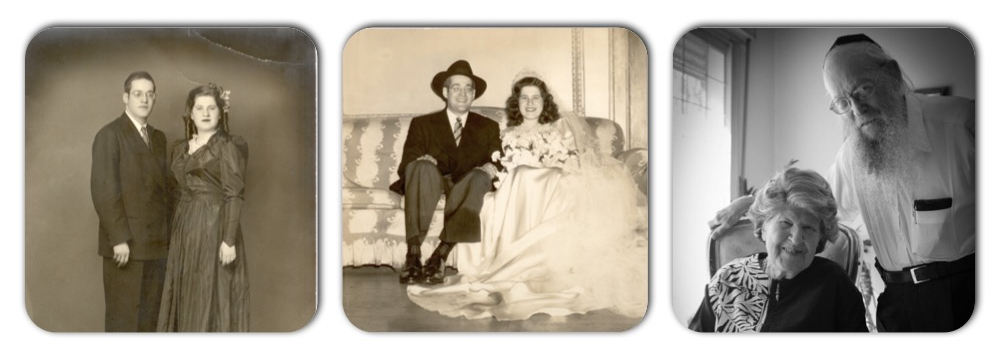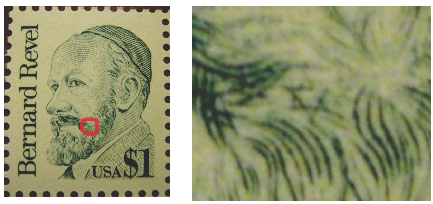Engraver Alters Die of a Postage Stamp
WASHINGTON, Aug. 15— An unauthorized Star of David, invisible to the naked eye, was etched into the die of a $1 postage stamp issued last September to mark the 100th anniversary of Yeshiva University.
Officials of the Postal Service and the Bureau of Engraving and Printing said today that a bureau engraver had secretly altered the master die for the stamp, which bears the portrait of Bernard Revel, a longtime president of the New York City university and of the Rabbinical College of America.
Millions of the stamps have been printed, all containing the tiny, six-pointed star buried in the educator’s beard, visible with a magnifying glass just below the left side of his mouth.
James Van Loozen, a spokesman for the Postal Service, said there were no plans to call back the issue or re-engrave the master die. With no changes contemplated, philatelic experts said it was unlikely that the Revel stamps would rise in value to collectors. Anonymous Call a Week Ago
Peter H. Daly, the Deputy Director of the engraving bureau, said the bureau learned of the irregularity from an anonymous caller about a week ago. The covert star was first disclosed publicly by Linn’s Stamp News, a weekly philatelic publication, and was reported today in The Washington Post.
Mr. Daly said the star was etched by an employee named Kenneth Kipperman, who has worked for the bureau about 10 years and, in an incident that appears wholly unrelated to the stamp-tampering, is facing charges in connection with a bomb threat.
Mr. Kipperman, who could not be reached today to comment on the allegation, is one of 16 artisans at the bureau who are classified as bank note engravers. Mr. Daly estimated that there are probably fewer than 100 similarly skilled people in the world.
”It is not an uncommon thing for engravers to somehow personalize their work,” said Mr. Daly, pointing out that it is done in a number of countries. ”We do not allow it here, however, and we do not condone it,” he emphasized. Official Calls It a First
Although there are printing flaws, in which a President, for example, may get extra eyelashes or strands of hair, no previous instances of surreptitious markings on the die have come to light, according to Mr. Daly.
John F. Dunn, the stamp columnist for The New York Times, said it was ”very unusual” that the irregularity had not been discovered earlier. ”Usually, collectors will look at these stamps very closely when they are originally issued, blowing them up to examine smallest details,” he said.
The Revel stamp came out Sept. 23, 1986, on the first day of the Yeshiva anniversary celebration. The stamp, part of the Great Americans series, was designed by Tom Broad of Chevy Chase, Md.; Mr. Kipperman’s engraving was made in late 1985.
There were no positive indications today of what motive there might have been in altering the die.
Neighbors of Mr. Kipperman in the Washington suburb of Silver Spring, Md., who said they knew him were unable to explain what motive he might have had. One neighbor described Mr. Kipperman as adhering to the Jewish faith, and a brass plate bearing the word ”shalom,” a Hebrew word of greeting, is attached to the front door of the house.
A woman who identified herself as Mrs. Kipperman but who would not give her first name told a reporter: ”They took what he did this summer and twisted it. He never threatened anyone.”
She said her husband could not comment on any aspect of the affair because of the criminal charges against him.
Mr. Kipperman had been arrested in a bizarre incident June 17 after the police said he threatened to blow up the site of the United States Holocaust Memorial Museum.
He was said to have objected to the demolition of a building, next door to the Bureau of Engraving and Printing, to make room for the museum, and barricaded himself in the partly razed structure for three hours. The case has been turned over to a grand jury.
Since then, Mr. Kipperman has continued to work at the bureau but has been given administrative duties outside the area where stamps and currency are made. Mr. Daly would not comment on what action, if any, might be taken as a result of the etching of the unauthorized Star of David.
It was uncertain whether any laws or regulations of the Postal Service or bureau apply; officials said it appeared to be more the case of an employee overstepping his bounds.
Photo of One-dollar postage stamp with enlarged detail showing the unauthorized Star of David that was secretly etched into the die

